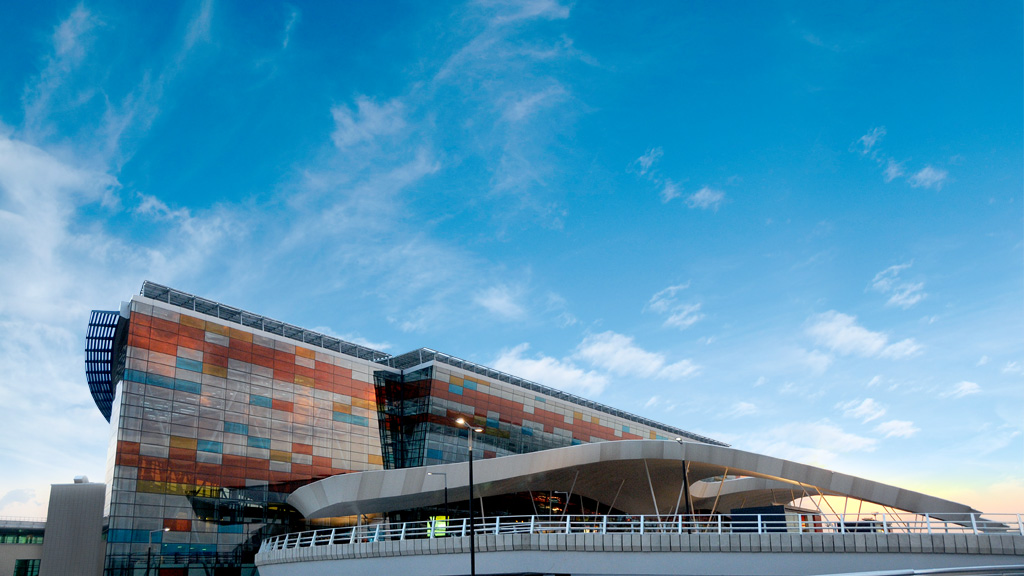Fact No. 97.
The world’s longest aerial tramway opened in Armenia in 2010.
Although it is true that the Republic of Armenia faces many challenges today, there is at the same time no denying that a lot of meaningful and, frankly, cool things are also going on in the country – many of them backed by efforts from the Diaspora.
For example, getting to the medieval monastery of Tatev in the southern region of Syunik in Armenia – over a thousand years old – meant driving down into and back up from the steep gorge of the Vorotan river. Until 2010, that is, when the flagship element of the Tatev Revival Project of the IDeA Foundation was inaugurated. The Wings of Tatev aerial tramway is the longest in the world at over 5,000 metres (18,000 feet). The area is being developed for tourism as a whole, with renovations and restaurants and bed-and-breakfast offerings, spearheaded by investors from outside Armenia with the support of the government: a good example of a successful public-private partnership model.
Information technology is a favourite sector of the Armenian economy, given the country’s land-locked status and other geopolitical considerations. In that vein, the Tumo Center for Creative Technologies naturally came to be a highly welcome and exciting venture set up by Sam and Sylva Simonian – Armenian-Americans originally from Lebanon – and their team. Launched in Yerevan in 2011, Tumo offers after-school activities for adolescents, focussing on programming for the web and animation, as well as games, and digital media, and also holding workshops in other areas that call for creativity and collaboration. It has quickly turned into a hotspot for the next generation of Armenian wiz-kids. Tumo has hosted huge names from the world of gaming, entertainment, and IT, including Alexis Ohanian of Reddit fame, and Raffi Krikorian, formerly of Twitter, now at Uber, who also sits on Tumo’s board of advisors.
The Diaspora’s attention is not towards churches or computers alone, however. The Cascades complex in downtown Yerevan was renovated by the Cafesjian Family Foundation, transforming the area into a well-maintained public space, while additionally carrying out the construction work within the cascading steps that had lain dormant since Soviet times. The Cafesjian Center for the Arts, which opened in 2009, is currently housed within the steps and in the open air, sharing works of modern art with locals and tourists in Yerevan.
Further up one of the capital’s main thoroughfares, the Lovers Park across from the presidential palace was taken on by another family foundation, this time Armenians from Europe. The Boghossian Foundation converted that area in the mid-2000s into a clean and cared-for green space, hosting public events (and free WiFi to boot). This particular garden was part of a larger wooded area before the city grew in that direction in the 20th century; some of the trees in Lovers Park are in fact over 150 years old.
Perhaps the most enduring Diasporan investment in the Republic of Armenia came to be just as the country itself was coming into being. The American University of Armenia was founded in 1991 with the mission to educate a new generation of leaders for a new country. It has kept up its reputation as a premiere institution of graduate education in Armenia ever since, opening up to undergraduate classes in 2013. The establishment by the IDeA Foundation of the the UWC Dilijan College in 2014 – part of the world-wide network of United World Colleges – was likewise a boost for education at the school level in Armenia, attracting a number of high schoolers from around the world.
The above are only a handful of many visible undertakings in the Republic of Armenia today. There are a number of other projects – whether not-for-profit or businesses, whether Diasporan in origin or home-grown, or all of the above – that are pushing the country forward with steps big or small.
(Full disclosure: 100 Years, 100 Facts researcher and writer Nareg Seferian has worked with the American University of Armenia and the Tatev Revival Project. Neither establishment sponsored their mention in this post.)
References and Other Resources
1. Guinness World Records. “Longest non-stop double track cable car”
2. Tatev Revival Project
3. Tatever Wings of Tatev
4. IDeA Foundation
5. Tumo Center for Creative Technologies
6. Cafesjian Center for the Arts
7. Boghossian Gardens
8. American University of Armenia
9. UWC Dilijan College
10. Zvartnots Armenia International Airports
Follow us on
Image Caption
Zvartnots Airport used to seem less-than-welcoming to visitors by air to Armenia, until its transformation through Argentine-Armenian investments; this new terminal building was inaugurated in 2011.
Attribution and Source
By Armenia The World (Own work) [CC-BY-SA-3.0], via Wikimedia Commons
Recent Facts
Fact No. 100
…and the Armenian people continue to remember and to...
Fact No. 99
…as minorities in Turkey are often limited in their expression…
Fact No. 98
Armenians continue to live in Turkey…
Fact No. 97
The world’s longest aerial tramway opened in Armenia in 2010

